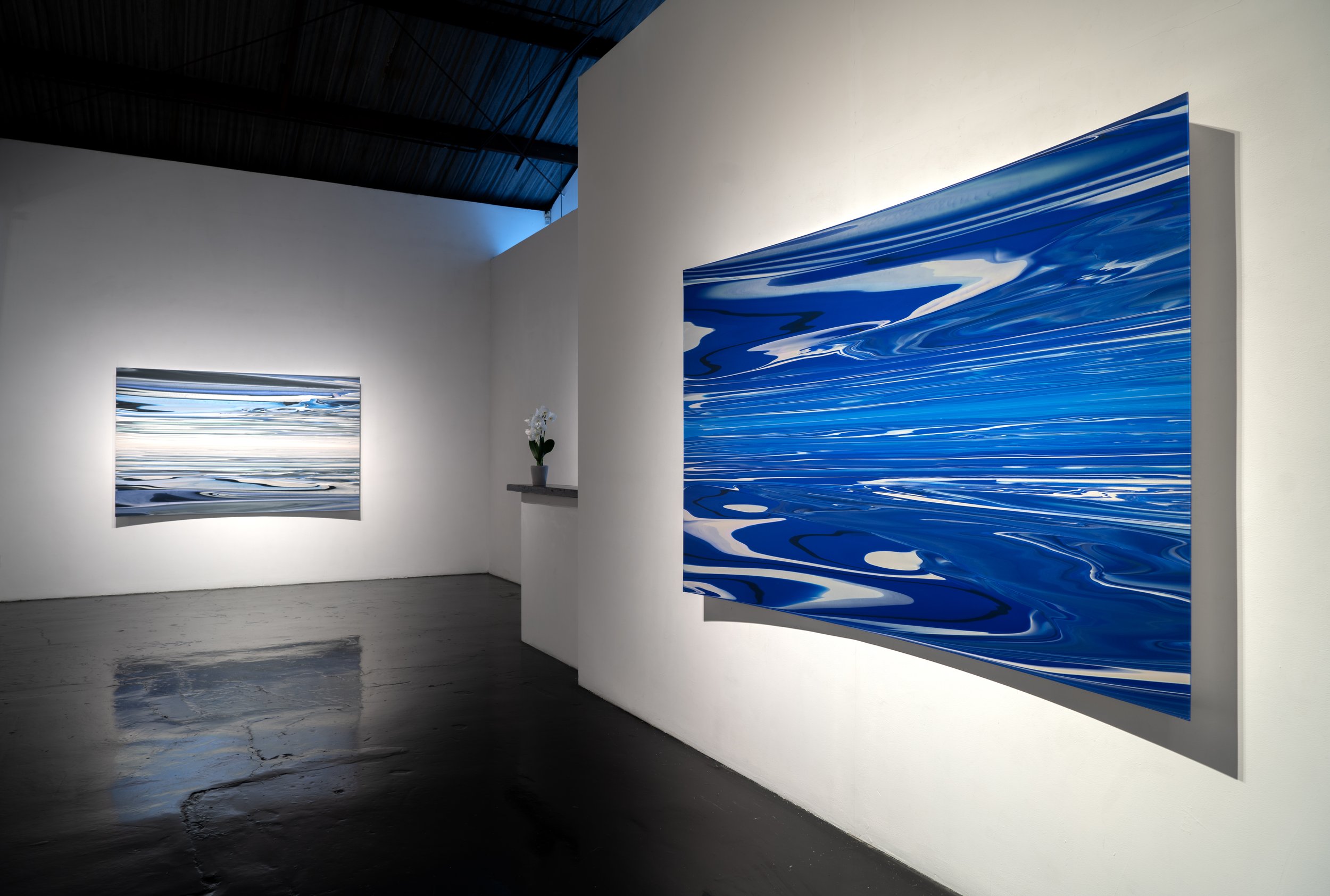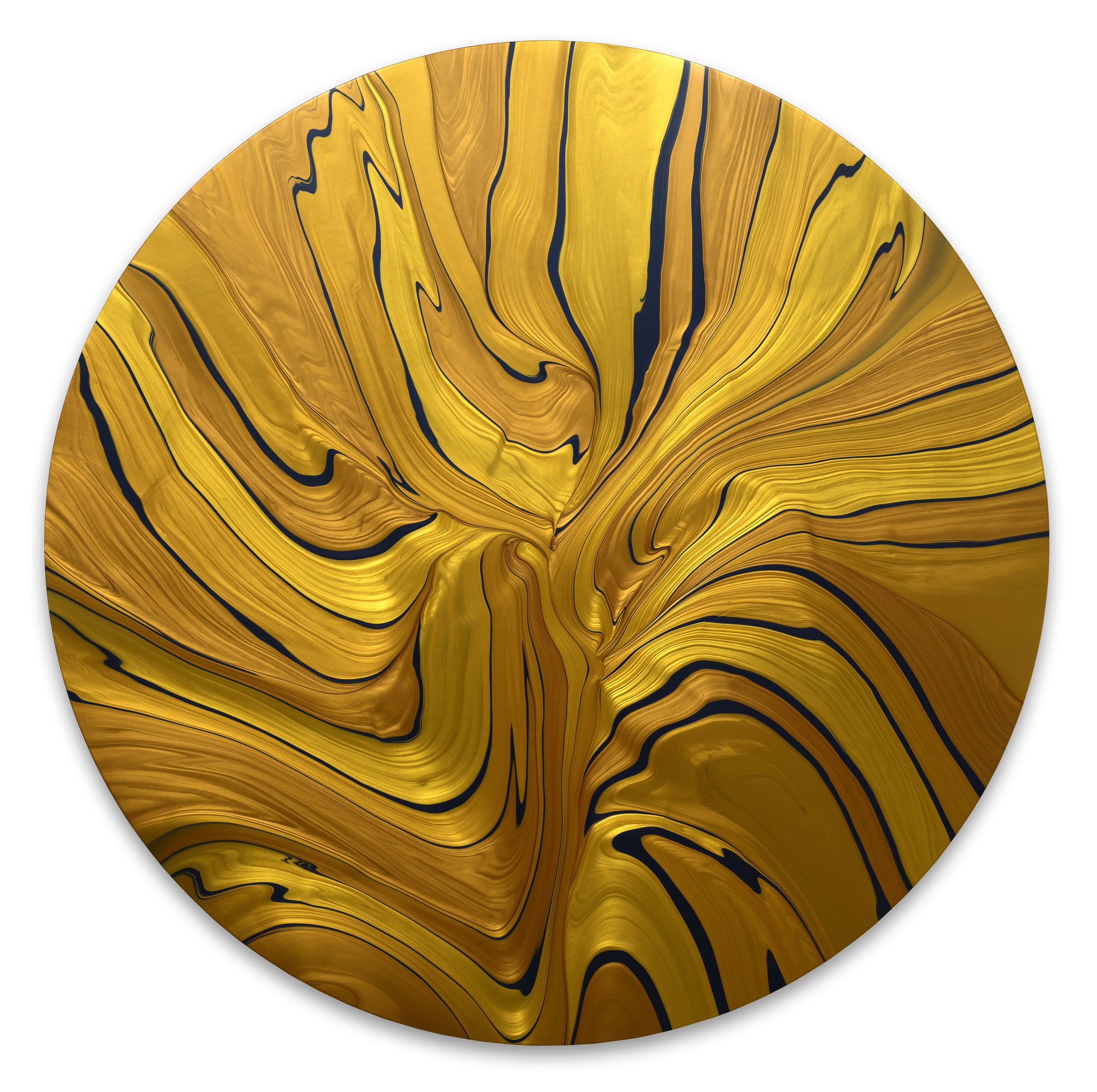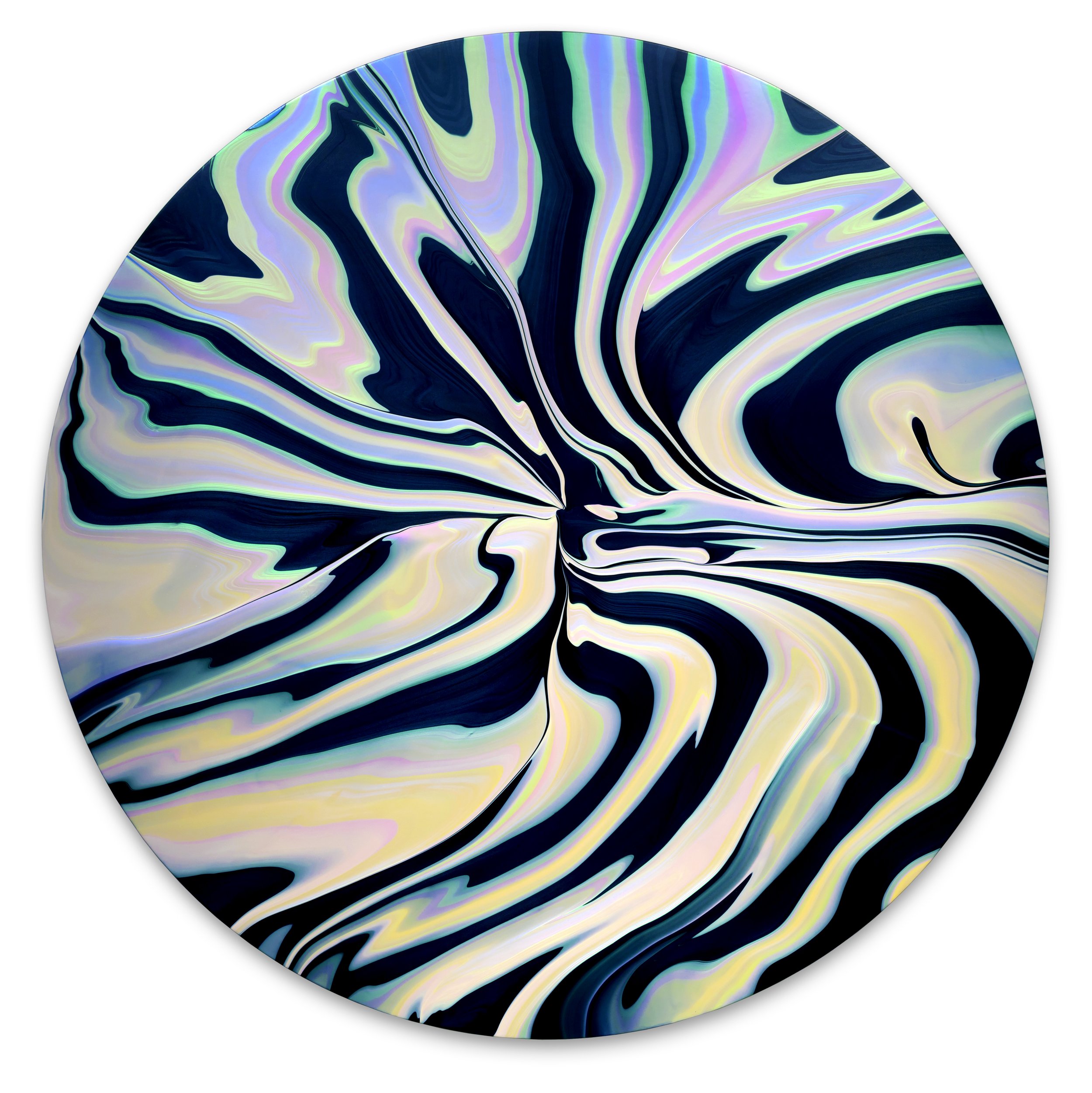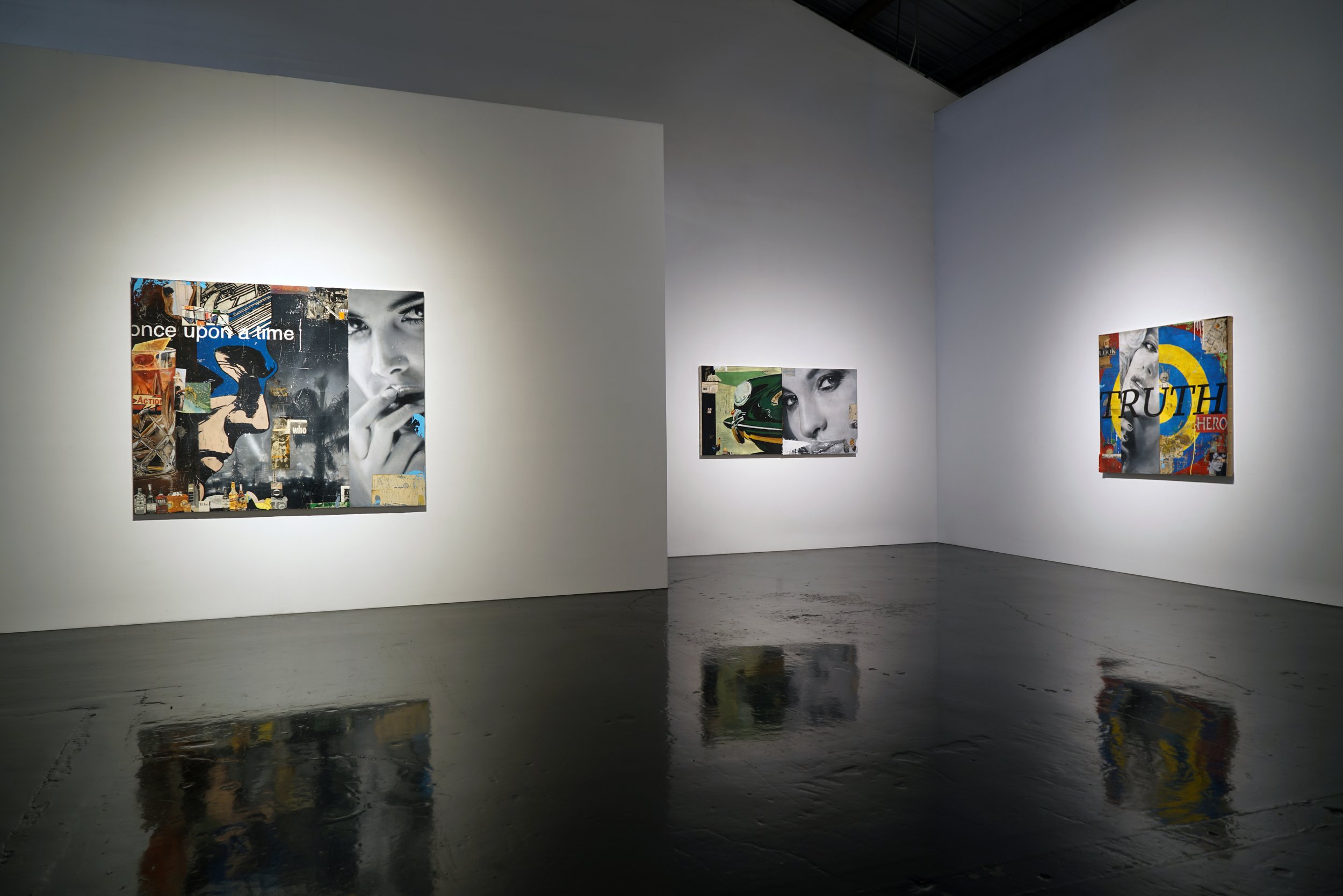Andy Moses: Recent Paintings - Exhibition Video
/Watch a short video showcasing the extraordinary works in Andy Moses: Recent Paintings
Read MoreWatch a short video showcasing the extraordinary works in Andy Moses: Recent Paintings
Read More

By LORIEN SUÁREZ-KANERVA September 11, 2023
Andy Moses’ Recent Paintings will be showcased at the William Turner Gallery in Los Angeles from September 9 until November 11, 2023. Moses Recent Paintings’ distinct color use encompasses a predominantly white, blue, black and gold palette. All-white color tints, shades, and their lustrous variability are at play amidst clear, sharper, fluid lines, and softer open gradations, leading toward ethereal spaces. Moses’s sensibility spans a buoyantly luminous subtlety and achieves a refined definition through a meticulously grounded and richly orchestrated embodied perception. Maurice Merleau-Ponty pointed to embodied perception as the experience of the self in an environment at the crucible towards forms of relatedness that reveal meaning and expand perception.

Geomorphology 1607, Acrylic on canvas, over concave wood panel, 57 x 90 inches, 2023
Fiber Birren, Johannes Itten, and Carl Jung address the subject of color each through a psychological vantage point, cultural nuances (like Jung’s groundbreaking study of mandalas of the East by introducing these to the West), and Color Theory. The sensorial effects of color suggest a responsive universality based on similarities that bridge cultural bounds. In his works “Color and Meaning” and “Color and Culture,” John Cage supports these observations on color's meaningful effect on sensorial understanding across cultures. Most salient in Moses’ works is the combination of white and blue, where black shifts through a reflective play with light toward shades of blue. From these earlier scholars' observations, colors such as whites speak of clarity, illumination, and spirituality, and blues inspire serene tranquility and introspective depth.
As a countertone, gold's earliest cultural associations with the sun's radiant power extend the hue's significance to encompass wealth and prominence. For Jung, gold represented the self's individuation process, stimulating wisdom and enlightenment—likewise, Itten and Birren associated illumination and divine inspiration with gold. Extensively, gold in East Asia, including Japanese 18th-century iconography, signifies wealth, power, good fortune, and divinity.

Geomorphology 1606, Acrylic on canvas over concave wood panel, 57 x 90 in, 2023
Moses shares the American Transcendentalists’ numinously intuitive perception of nature alongside the critical figures of Thoreau, Whitman, Emmerson, and their predecessor, the Canadian Henry Wadsworth Longfellow. Poetry such as Henry Wadsworth Longfellow’s lines from his poem “The Tide Rises, The Tide Falls” are evident in Moses’ paintings, and they highlight a kinship, reveling in transcendental sensibilities grounded in the human experience of nature and its patterns throughout time.
“The little waves, with their soft, white hands,
Efface the footprints in the sands.”

Geodesy 1514, Acrylic on canvas over circular wood panel, 72 in diameter, 2023
Longfellow summarizes this generational contribution towards a deepening receptiveness and recognition of how these contemplations become influential legacies in his poem “A Psalm of Life.”
“Lives of great men all remind us.
We can make our lives sublime,
And, departing, leave behind us
Footprints in the sands of time.”

Geodesy 1515, Acrylic on canvas over circular wood panel, 72 in diameter, 2023
Similarly, Moses perceived an affinity and kinship from the East with Ryukyuan lacquerware for its craftsmanship and conceptual design motif through his introduction while viewing LACMA’s “The Five Directions: Lacquer from the Ryukyu Islands” exhibition. This iconography and the craft itself of creating a painstaking layering of resin polished into lacquer was characteristic of Japan’s Ryukyu Islands from the 18th century. The motif speaks of benevolent mystical forms seeking wisdom in East Asian cultural iconography. One particular piece in LACMA’s exhibition, a circular tray, inspired his painting titled Geodesy 1515. The matter of the enlightenment is also poetically crafted as an adornment – Dragons Chasing the Flaming Pearl. The Flaming Pearl holds as its essence the themes of wisdom within a spiritual scope. At the same time, the dragons culturally appear as strong protective forms that control natural elements.

Circular Tray with Dragons Chasing a Flaming Pearl, Black Lacquer on Wood Core with Mother of Pearl Inlay, 3.5 x 35.25 in, Ryukyu Islands, 1700-1800, LACMA Permanent Collection.
The American transcendentalist ethos, presented in the poem “Come, said my soul” by Whitman, attests eloquently to their literary movements’ vision of universal unity. Their writings draw deeply from their dedicated contemplation and communion with nature. This is akin to the sensibility the mystics have shared throughout time.

Geomorphology 1608, Acrylic on canvas over concave wood panel, 57 x 90 in, 2023
“Come, said my soul,
Such verses for my body let us write, (for we are one,)
That should I after death invisibly return,
Or, long, long hence, in other sphere,
There to some group of mates the chants resuming,
(Tallying earth’s soil, trees, winds, tumultuous waves,)
Ever with pleas’d smile I may keep on, Ever and ever yet the verses
owning – as, first, I here and now,
Singing for soul and body, set to them by name,
Walt Whitman
Andy Moses’s paintings attest to this universal transcendence, poetically defined, and breathtakingly revealing its cultural lineage’s kinship. WM
Please enjoy this short video highlighting work from the exhibition. To view the exhibition catalog please press the button below.
TOMORROW AT BERGAMOT STATION



Greg Miller's artistic versatility is evident in his adept use of various painting styles. With a deft hand and craftsmanship, he navigates different techniques to achieve diverse visual effects in his work. Using a Renaissance practice of layering paint, he is able to achieve the photorealism in his portraits which is a highly labor intensive and skillful process.
One can observe Miller's skillful mastery of realism in his highly detailed and precise portrayals. Whether it's capturing the nuanced expressions of faces or rendering intricate textures, his attention to detail demonstrates his command over the Realist style.
The exhibition’s title comes from the work Once Upon a Time, which illustrates many of the themes, and techniques characteristic of Miller’s oeuvre. Central to the image is a black-and-white painting of a vintage Hollywood city-scape during its “Golden Age”. Super-imposed, is the profile of a comic book action-hero surveying the vista. To the right, Grisaille is applied with spray paint to produce a photorealistic portrait of a woman seductively peering out from what appears to be a cropped still-frame. The scratched surface alludes to wear, and the passage of time. Collaged below is a text clipping of “the right” with a clock next to it, suggesting “time”. On the far left, a faceted crystal highball glass is labeled with a clipping reading “ACTION”.

Once Upon A Time, acrylic on canvas, 60” x 72”, History, acrylic on canvas, 36” x 72”, Truth, acrylic on canvas, 48” x 48”
GREG MILLER
Greg Miller (b. 1951) was born in Sacramento, California and holds a Master of Arts Degree from San Jose University. Once a long-time Venice, California resident, he currently resides in Austin, Texas.
His work is featured in numerous museum and private collections, including those of: the San Jose Museum of Art, Newport Harbor Museum, Crocker Museum of Art, Los Angeles County Museum of Art, Laguna Art Museum, Riverside Art Museum, Frederick R. Weisman Foundation and Charles Saatchi Foundation. The Get Go, a volume of his writings, photography and paintings was published in 2010, and the first comprehensive monograph of the artist, Signs of the Nearly Actual, was published in 2009.
GREG MILLER Once Upon A Time
June 10, 2023 – August 12, 2023
